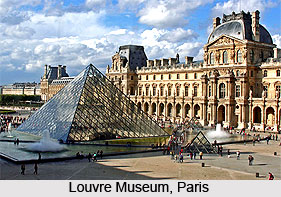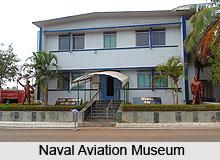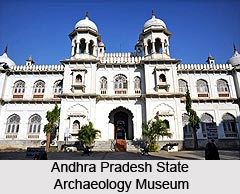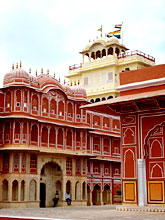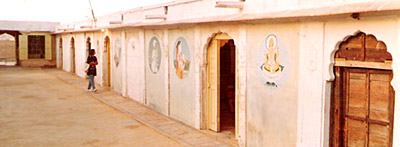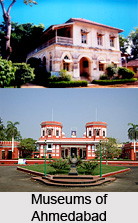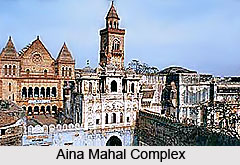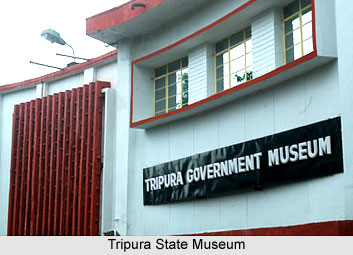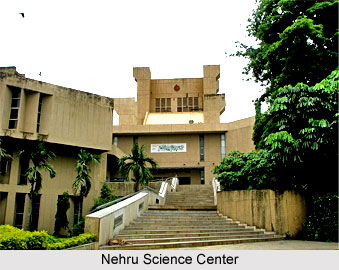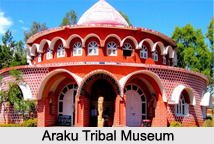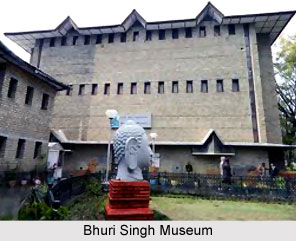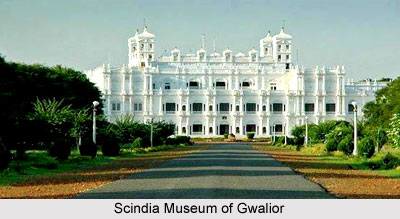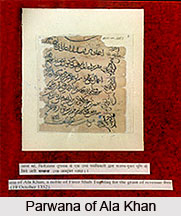 Museum of national Archives, New Delhi, is not only the precious repertory of the past but also holds important records, related to governmental matters. The earlier events of towering significance never die way with time, but remain alive in the documented records maintained at the Museum of National Archives, India. These phenomenal archives immensely furnish the administrators and research-scholars with the required data.
Museum of national Archives, New Delhi, is not only the precious repertory of the past but also holds important records, related to governmental matters. The earlier events of towering significance never die way with time, but remain alive in the documented records maintained at the Museum of National Archives, India. These phenomenal archives immensely furnish the administrators and research-scholars with the required data.
Originally, the Museum of National Archives, in India, was founded by the British Government in March 1891, in the Calcutta (presently called Kolkata), as the Imperial Record Department. In 1911, the Department, was made to migrate from Calcutta to the National Capital of New Delhi in 1911. Ultimately, in 1926, it got transferred to a site, which still now remains its present address, Janpath, New Delhi.
The first and foremost task of the Museum of National Archives, New Delhi, conserves the vital statistics of the Govt. of India in its chest .
The red-lettered decrees and agreement of Indian history, find place in the vast repository of the Museum of National Archives, Delhi.
Parwana of Ala Khan in Persian dated 19 October 1352 , marked as the most ancient document , recorded on paper , teams up with other records here. For instance, the Firman of Humayan, dated, 16th December, 1539 and Hukum of Nur Jahan, 1625, reflects on the political scenario of Mughal India.
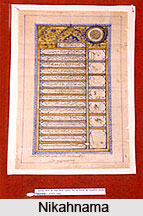 Again, the political character of the latter period, receives focus, through the Treaty between Great Britain and the Netherlands (English and Dutch), 17th March 1824; Letter of Tipu Sultan to Nawab of Arcot , bearing Sultan`s signature and inscribe; and the Sanad issued by East India Company to Maharaja Dalip Singh on the seizure of his rights and presentation of Koh-I-Noor, 28th March 1849.
Again, the political character of the latter period, receives focus, through the Treaty between Great Britain and the Netherlands (English and Dutch), 17th March 1824; Letter of Tipu Sultan to Nawab of Arcot , bearing Sultan`s signature and inscribe; and the Sanad issued by East India Company to Maharaja Dalip Singh on the seizure of his rights and presentation of Koh-I-Noor, 28th March 1849.
Treaty concluded among the East India Company, Peshwa Madhav Rao and Nizam, Nawab Mir Nizam Ali, on 1st June, 1790, enlightens the history-lovers and scholars, with the nature of the treaties, signed during British raj. There are other types of such political archives.
The record of the Petition, forwarded to the then Governor General, Lord Cornwallis for setting up an Orphan Home and initiating other welfare activities at Calcutta in Bengal of 1787, highlights on the welfare-enthusiasm of social reformers.
Very interesting is the edict of marriage, Nikahnama , showing the date of 8th March, 1886. It is wonderful to learn that such legal proclamations, authenticating the marriage of Mirza Usman Beg with Akbar Begam, acknowledges, the need for marriage-certificates and legal observation of relationships in any society. It in a way affirms the recent trend of treating registry-marriage as mandatory.
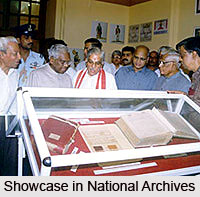 That India is a multi-lingual nation, can very well be recognized from the valuable documents, available in different languages , for instance, Bengali, Gurmukhi ,Oriya ,Persian and Marathi. It not only drives home the point of India`s wide spectrum of languages, but also on the intrinsic richness of each language.
That India is a multi-lingual nation, can very well be recognized from the valuable documents, available in different languages , for instance, Bengali, Gurmukhi ,Oriya ,Persian and Marathi. It not only drives home the point of India`s wide spectrum of languages, but also on the intrinsic richness of each language.
Extolment notes , like the Qasida of Mirza Asad Allah Khan Ghalib , eulogizing, Lord Harding I is indeed mind-blowing. It instructs today`s generation of government officials, the art of formal thanksgiving.
Sketching the architectural-model, prior to the establishment of the real set-up is no new phenomenon. The Proposed Plan of the Mausoleum of Bahadur Shah Zafar at angoon, attests this truth.
Trade and commerce-oriented relevant records, are included in the ambit of the Museum of National Archives, New Delhi. The Share Certificates of Delhi Cotton Mills, 1889, is an apt example.
Important trade-contracts, such as, the Letter to Secretary of N.W.P., on 7th December 1843 for the import of tea., exhibits the patterns of trade-deals in those days.
The technicality entailed in the industrial sector even gets stated in the national archives. The description of the implement applied in the production of tea at Kumaon, caters to this aspect of the material, stored in the Museum of National Archives, Delhi. Similar is the depiction of the chart of apparatuses, utilized during Green Tea-manufacture.
The Bengal Smoke Nuisance Bill 1904, is a dazzling example of social prohibitions.
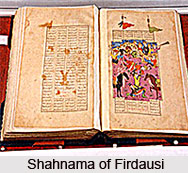 Wood-cutting laws and forest-conservation rules, like the ones, necessary for cutting Timber in the Government forests, is a part of the storehouse of archives, in the Museum of National Archives.
Wood-cutting laws and forest-conservation rules, like the ones, necessary for cutting Timber in the Government forests, is a part of the storehouse of archives, in the Museum of National Archives.
There are an abundance of captivating and informative displays in the Museum of National Archives , New Delhi.
The most profound influence is exerted by the showcase of the execution of Mangal Pandey, a tumultuous occurrence that ignited the Great Revolt of 1857.
The genealogical family tree of Rani Lakshmibai of Jhansi demonstrates facts of royal lineage.
Other notable exhibits, include that of Native-Dyeing; of Jam-I-Jahan Numa (Persian Urdu) ; of Padhiti Siksha ; Nilmat Puran , Shahnama of Firdausi , authored in 1010 A.D. and transliterated in 1653 A.D. (Persian). Furthermore, Ain-I-Akbari (Persian),dated, 27 April 1824 A.D.; Sanskrit Lotus Sutra Manuscript from the National Archives of Nepal (Xerox-copy); Razm Nama: Persian translation of the famous epic, Mahabharat, 1582 A.D.; and the marvelous Dictionary, written in eight languages, enrich the reserve.
The prime attractions of the Museum of National Archives, New Delhi , is quite substantial in number. 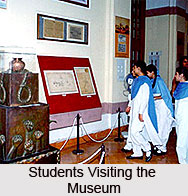 The Lanka Kand (event ) of the Indian epic, Ramayana, is illustrated on Bamboo leaf . It not only, portrays the invention of the bamboo leaf as a workable writing-base , for the ancient Indian civilization, but also throws light on the culture, society, and lifestyle and ethics of that age.
The Lanka Kand (event ) of the Indian epic, Ramayana, is illustrated on Bamboo leaf . It not only, portrays the invention of the bamboo leaf as a workable writing-base , for the ancient Indian civilization, but also throws light on the culture, society, and lifestyle and ethics of that age.
The eternal text of Life, the Bhagwad Gita, is the most religious , thought-provocative, literature of Indian life, present among the sea of archives in the Museum.
The historical letter of Raja Khalifa of Bencoolin (Malay), Kalpsutra, and the letter of felicitation, delivered on the occasion of the crowning of Nawab Hamid Ali Khan of Rampur , are an integral part of the list of topmost favourites and significance.
Seals of Maharaja Ranjit Singh, and Maharaja Dalip Singh, are testimonials of Indian royalty.
Kharita , attached with letter and seal, is the next attention-seeking item.
Official agreement between Maharaja Ranjit Singh, Shah Shuja and East India Company, reinforces the political complexion of their times. Finally, the Mahrut Chakrika, and the religious Seal of Bohra Community, acts as the insignias of cultural heritage.
The Museum of National Archives, New Delhi, remains open on any day, except on Saturdays, Sundays, and Gazetted holidays. The visiting time is 10.30.a.m. to 5p.m.
The Museum of National Archives, New Delhi, has made the past into a living present. The assertion of the pre-eminence of Indian past and history, in the influence of the archives of the Museum of National Archives, New Delhi, on the visitors mind, can never be ignored.
